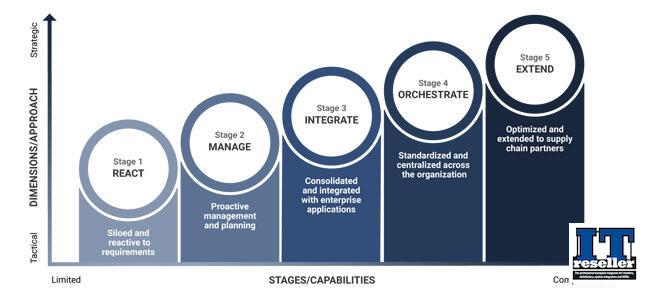Loftware, the enterprise labelling and artwork management solutions provider, has announced the Enterprise Labeling Maturity Model, which offers a methodology to evaluate the current effectiveness of a company’s enterprise labelling.

This interactive framework highlights capabilities and processes over five specific stages of maturity and offers companies a roadmap for continuous improvement in labelling across their supply chains and global operations.
Companies can use this model to diagnose and better understand the impact of their current labeling efforts, enabling managers to develop a comprehensive enterprise labelling improvement plan. The framework outlines five progressive stages of maturity based upon key criteria referred to as ‘dimensions.’
These nine dimensions include essential labeling components such as standardisation, automation, ownership, printing & output, and compliance. An interactive assessment allows companies to complete an online survey to identify strengths and weaknesses across a continuum and determine their current level of Enterprise Labeling maturity. Companies that take the assessment receive a personalized report, enabling them to review their current labelling maturity and then identify areas needed for growth and improvement.
“This maturity model offers business leaders insight into their labelling effectiveness and allows them to identify a clear path to prioritise efforts and ensure that labeling is optimised.” stated Loftware President and CEO, Robert O’Connor, Jr. “Every company is different in terms of their global requirements and ability to support evolving business demands. This model offers all companies a framework for the key steps needed to progress to the next stage of labeling competency and realise the associated business benefits and financial returns,” he added.
The Enterprise Labeling Maturity Model outlines a progression of five distinct stages ranging from limited labelling capability and processes to comprehensive.
The first stage is the ‘React’ or reactionary stage, when labelling is primarily manually driven with siloed initiatives.
The second stage extends to ‘Manage’, when companies are proactively managing and planning labeling.
At Stage three, ‘Integrate’ represents companies in which labelling has become integrated with data sources for increased accuracy and consistency.
Next, at Stage 4 ‘Orchestrate’ represents companies which have standardized and centralised labelling company-wide.
At the final stage, ‘Extend’ focuses on labeling and labelling processes being optimised and extended beyond the organisation to suppliers and business partners.
To help determine at which stage a company presents, participants completing the survey assessment are provided with a labelling maturity score and a personalized report intended to show them how to:
- Evaluate current effectiveness of labeling capabilities
- Determine key steps required to achieve higher levels of competency
- Collaborate with internal teams regarding next steps for labeling
- Develop a blueprint to prioritize labelling investments
The Enterprise Labeling Maturity Model was developed as a result of working with companies in the labelling space for more than 30 years to identify the most critical areas of development and growth when it comes to supply chain labelling. That work, with thousands of leading global companies from across a wide range of key industries, includes decades of research, extensive surveys and feedback from domain experts.

Add a Comment
No messages on this article yet